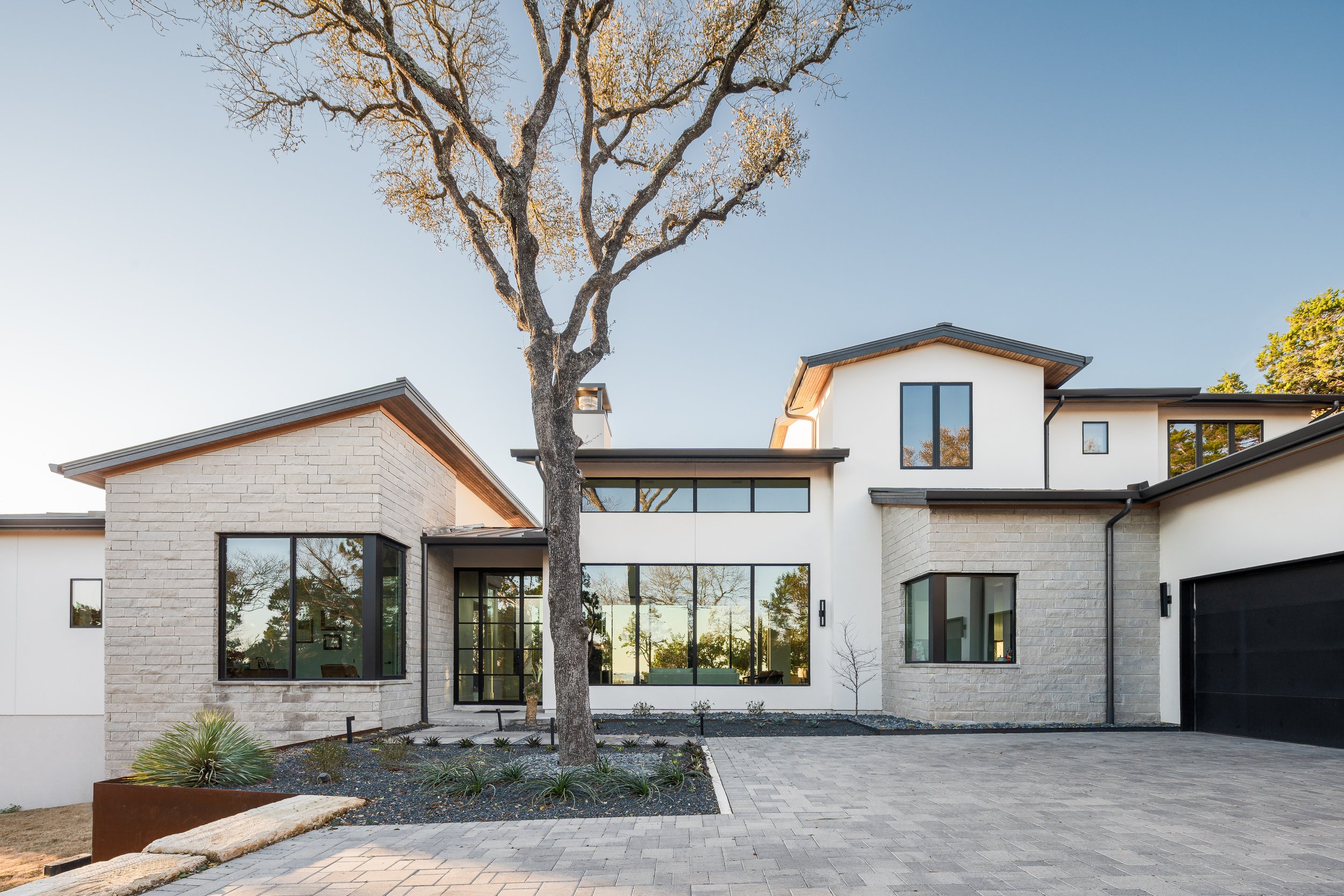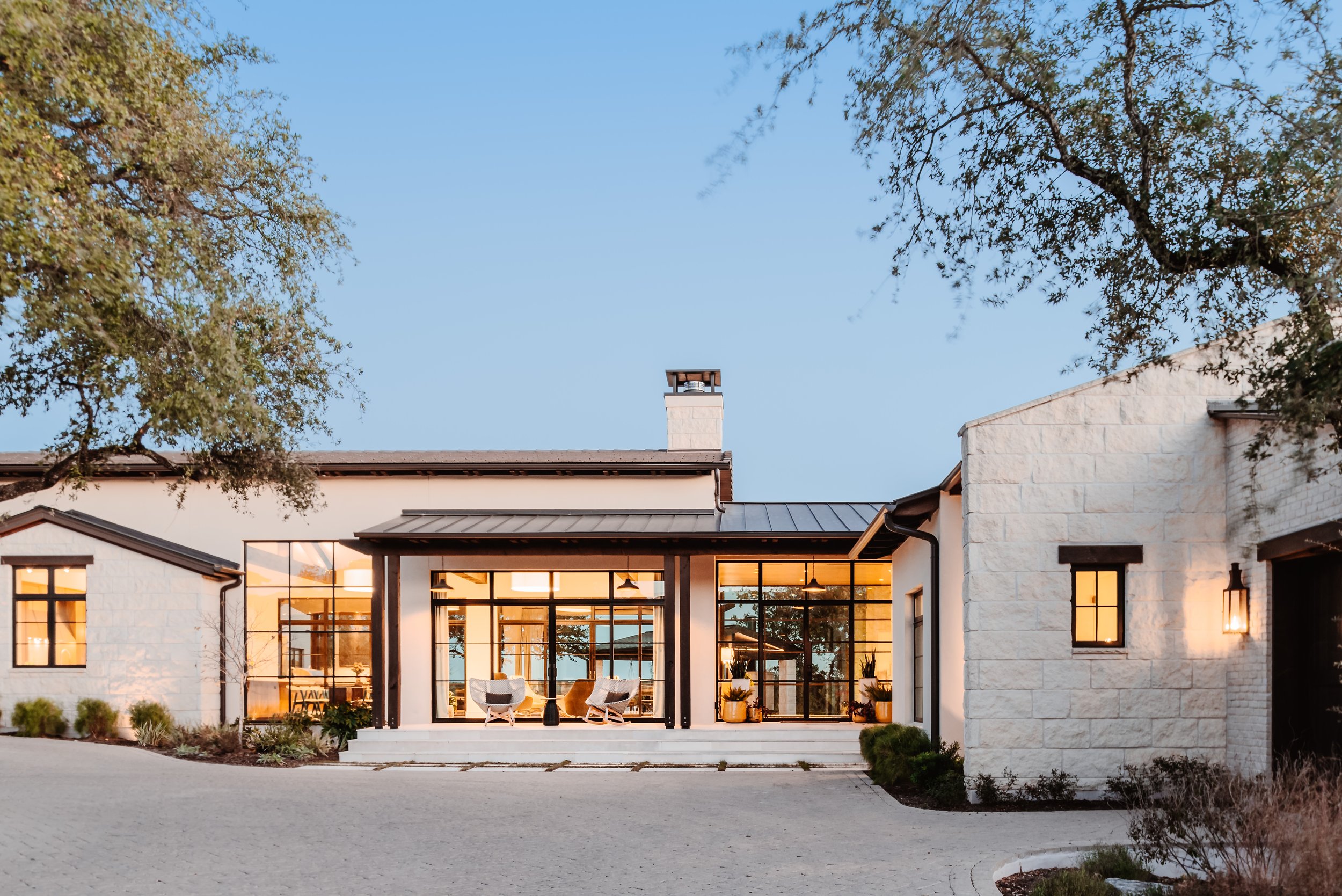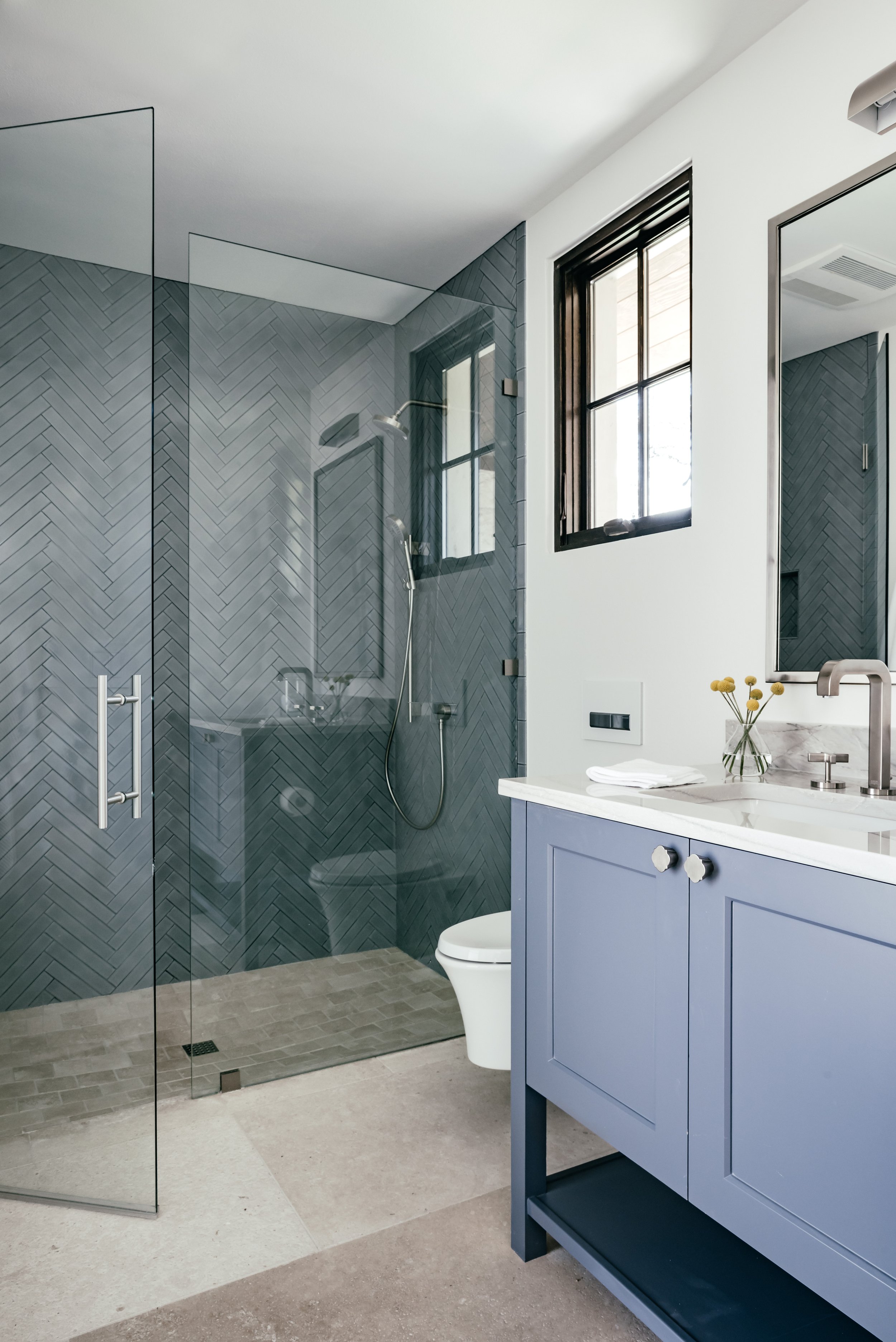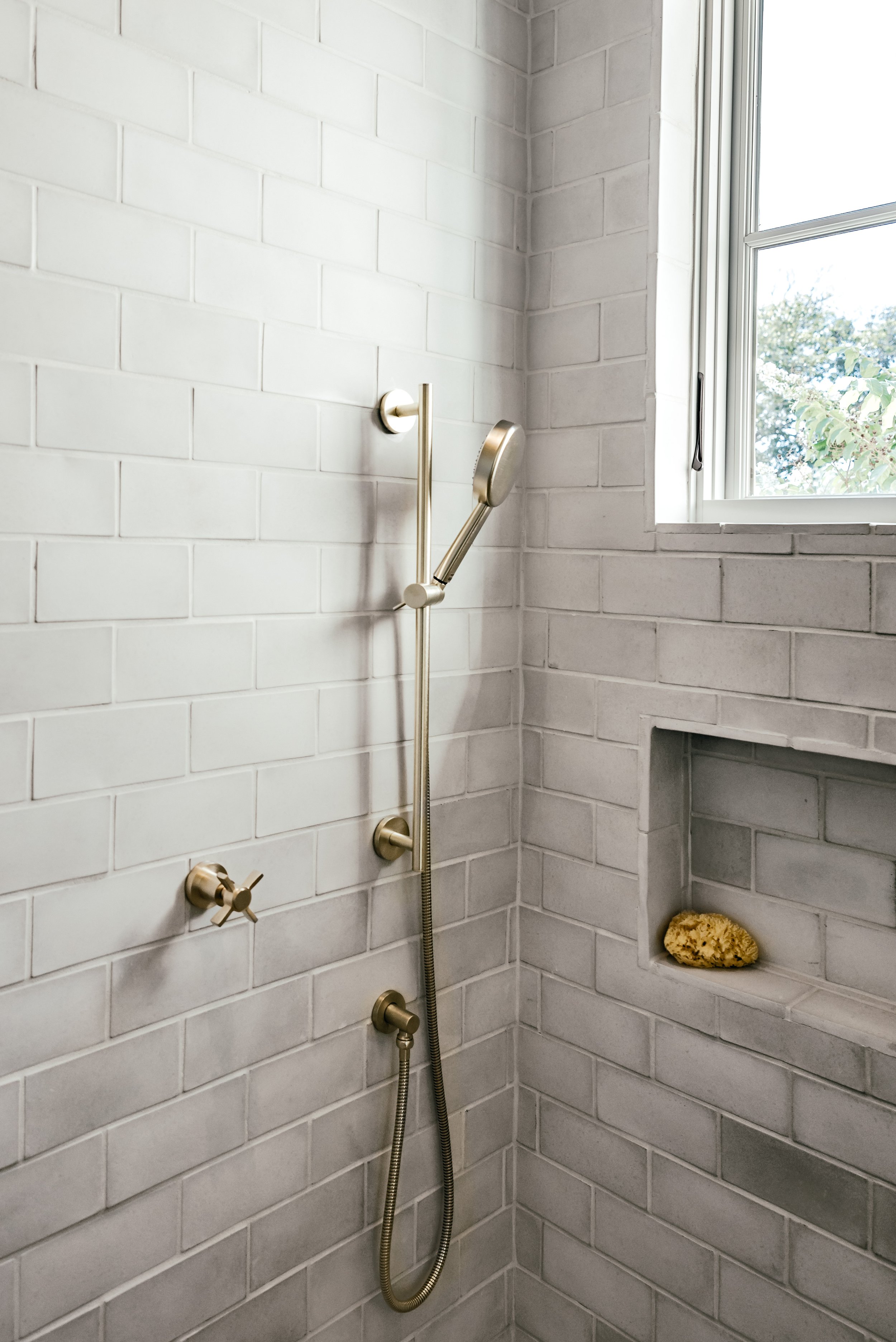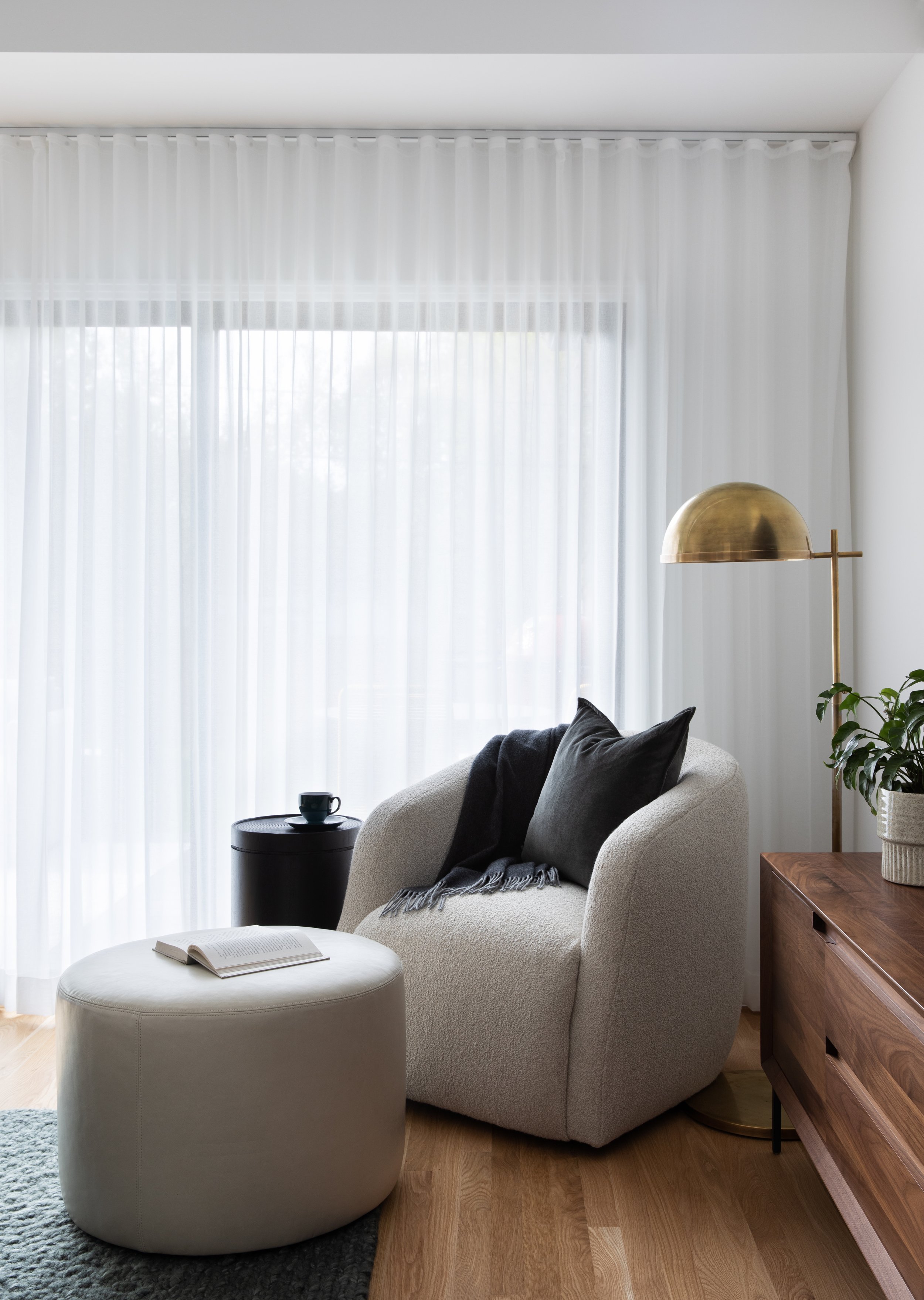A Glimpse Into the World of Windows
After years of managing remodels and new construction projects at my Austin interior design firm, I’ve come to appreciate the complexity and importance of windows. The design considerations span the expertise of architects, builders, and interior designers. Because there are so many players involved in the decision-making, homeowners must familiarize themselves with the components involved and take ownership of getting what they truly want. Let’s glimpse into the array of considerations in my Designer’s Guide to Windows.
My Guide to Windows for Your Home
Windows are one of the most expensive investments in the home-building process, and they are not easy to change if you aren’t happy with the result. Let’s look at the most important design considerations together, from the functional to the aesthetic.
Functional Considerations of Windows
POPULAR Window Brands
Start narrowing down considerations by selecting a window brand you’d like to use. Most builders I’ve worked with in Texas use Marvin or Andersen for standard windows and Western or Fleetwood for specialty windows. Standard windows are manufactured to fit the most common specifications, whereas specialty windows are designed for situations that require larger windows or less common functions (folding, nesting, etc.). You have the option to combine vendors to optimize costs, however, if all desired features are available through the same vendor, it's best to stick with one for the most cohesive result (color, frame profile thickness, etc.).
Window Material Options
Many window material options are available, including wood, vinyl, and metal. However, the most common material we use on our LBI projects is clad. Clad windows are constructed of wood and covered with a more durable material layer on the exterior-facing side to withstand the elements. The interior side features either a predetermined colored composite or raw wood that can be painted or stained after installation.
Discuss window-material options with your builder to evaluate maintenance and budget goals. Material choices also impact when you have to make color decisions. For example, when it's time to order, you will definitely need to know the exterior color choice. If you choose a composite clad, you must also pick an interior color from a predetermined list. However, if you select a raw wood clad, you have extra time to plan interior colors and choose any custom hue. We’ll get into colors more in the aesthetic considerations.
Window Sizes
Window size takes a significant role in your overall budget. You may have suspected that a bigger window is more expensive than a smaller one. However, standard and custom sizing also come into play. In some cases, the span of a few inches can require a custom design and push you to the next level of window brand or collection and increase the budget. Discuss your priorities with your builder and architect. It might be worth making minor adjustments to the plans to save on the overall window budget.
Pro-tip: Start Talking Windows in the Early Design Phases
Window brands, materials, and sizes make a huge difference in price. Start talking about windows in the early design phases with your team. If you want to invest in large window spans to frame a special view, go for it! But if you prefer to prioritize other features of the home, you may want to select a standard window grade. Voice your desires to your design team, and they will help guide you to the right choice.
Window Building Codes
Building codes dictate certain window functions and features depending on their location in the home. For example, bedroom codes require the ability to escape through a window in case of emergency. You may hear this described as an egress window. Additionally, other regulations specify the type of glass used. For example, codes require tempered glass (a process which strengthens the glass, and it if breaks it results in small harmless pieces rather than pointy shards) depending on window size and placement. Ultimately, these codes are for your safety, and your architect will consider them in the planning stages. I once had a client tell me after the fact that they got a great deal on a glass and steel entry door from Mexico. My first thought was “Dear God - I hope none of your kids ever go running into that glass!”, because for the price they paid, there was no way it was tempered…
Types of Windows
There are many window styles, each with a different look and mode of operation. Here are some of the most common:
Single-hung
Single-hung windows have two panels, one above the other. One panel moves while the other remains stationary.
Double-hung
Double-hung windows look like single-hung; however, both panels move.
Casement
Casement window panels are hinged on one side and open outward using an interior crank. Make sure to check the specified hinged side on the order. It will be noted based on looking at the window from the exterior.
Awning
Awning windows are similar to casement windows, but they are hinged on the top or bottom.
Fixed
Fixed windows don’t function. Examples include transom windows, mounted above another window or door, and clerestory windows, placed high along the ceiling line. Fixed windows are decorative rather than for air movement, but they are helpful in providing outdoor views and letting in natural light.
Energy Efficiency
Most windows offer energy-efficient features, including Low-E glass and ratings for heat loss resistance and solar heat gain. Pay attention to these metrics. Many regions have minimum requirements to meet, and these factors will play into your overall energy bill.
Aesthetic Considerations of Windows
Window Grid Patterns
Window grids or grilles are the thin strips that visually divide the window pane into sections. Historically, grids were a necessary part of window construction, dividing the span into smaller panes of glass that were easier to make. The structure dividers between the small panes were called muntins. When talking about windows, you may also hear mullions, the vertical bar between windows offering additional structural support. Today, modern glass technology allows us to create larger spans without dividers. So, grids are mainly a decorative element.
You have many window grid patterns to choose from, each indicative of an architectural style. For example, Traditional style windows feature even-sized sections, and Craftsman windows feature top-row grids. I’ve had more modern and minimalist clients abandon the idea of grids altogether, which works well in many cases. Be careful during a remodel to appreciate the aesthetic value of existing grids. Clients often want to eliminate the distraction or modernize an older home, but eliminating window grids in some instances can result in a visually uninteresting exterior.
Window Trim
Window casing is the decorative trim that frames your window. The style of your interior largely determines whether or not to add window trim. It’s typically a Traditional treatment, and there are many strategies depending on the style. For example, subtleties exist between the trim used in Craftsman and Colonial style architecture, so, pay close attention. Contemporary homes, on the other hand, often forgo trim altogether in favor of sheetrock returns. For renovations and additions, it’s best to match existing trim features to keep a cohesive look.
Window Color Options
As we discussed earlier, you must select an exterior and interior color for your windows. I like to use black, bronze, or gunmetal on the exterior. However, on more Traditional homes it’s also common to see white or light neutral. Ultimately, the decision is driven by the home's exterior color scheme and style. On the interior, many of my clients like to use black in the common spaces for bold contrast and a neutral white for the bedrooms. Staining the interior side also creates a lovely effect if you choose to use wood-clad windows.
Window Treatments
Don’t leave this decision until late in the process. There are many reasons why you should discuss window treatments up front. Read on for some primary considerations…
Shades
We use roll shades for light control and privacy in many of our designs. You’ll need to decide early on whether you prefer manual or wired automated shades. It is much easier to wire motorized shades during construction than deal with them after the fact. I recommend automatic shades for hard-to-access spaces, such as rooms with tall ceilings or windows above counters. Many of our clients select shade options that can be controlled with an app. Wouldn’t that be nice?
Additionally, you’ll need to select a shade color. Surprisingly, dark shades can offer transparency, allowing you to see outdoors when drawn. There are many transparency percentages to choose from to find the best option to suit your visibility, UV filtration, and privacy goals.
Automated Black Out Shades in a bedroom
Shade Pockets
Shade pockets should be planned during architecture. They are essentially a recessed channel in the ceiling where the shades can stay when not in use. You’ll see them most frequently in contemporary homes, and we work closely with the architect to identify which rooms are good candidates. Because they impact the ceiling structure, shade pockets are executed during the construction process.
Shade Pockets
Shutters
You have likely heard of Plantation Shutters, which are available in various sizes and materials, and there are also narrower shutters called Traditional or Colonial shutters, which have angled louvers and do well on smaller windows. Trends seem to lean away from shutters in general, although I do think they offer nice interest on the facade of a Traditional home.
Draperies
Many of our contemporary clients are initially resistant to draperies. I suspect they’re picturing stuffy, old-fashioned treatments from Grandma’s house, and they also don’t want to block their views. I get that! However, a variety of softer, more subtle window treatments brings a much-welcomed warmth to a room, especially dining and living rooms. Beyond aesthetics, draperies provide acoustic absorption, a necessary component in modern homes with many hard surfaces. Soft layered elements like draperies, rugs, and plants control sound as well as create an inviting space.
Subtle Draperies
The Bottom Line: Windows Require a Clear Design Vision
As you can see, there are so many important considerations when deciding about windows. Familiarize yourself with the options and hone in on what matters the most to you to create a clear, guiding design vision. Trust your experts and plan ahead to avoid panic and mistakes.

